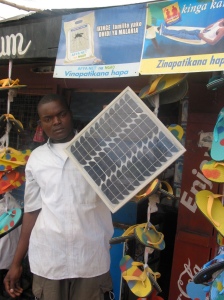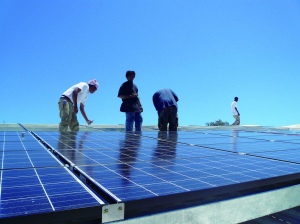Although greenhouse gas emissions from the world’s developed countries are lowering, the challenge of greenhouse gas emissions is far from resolved as developing countries, in their aim to improve living conditions and economic growth, continues to drive increased greenhouse gas emissions. In the face of this challenge, there is no doubt that transfer of environmentally sound technologies (ESTs) is critical – perhaps one of the most critical factors. Technology transfer holds the potential for actively working towards addressing global environmental challenges, also particularly as ESTs focus on combatting climate change, reducing our reliance on non-renewable fuel sources and accelerating the transfer to low carbon development, promoting and implementing renewable and clean energy sources.
Technology transfer described
The concept of “Technology Transfer” is an all-encompassing concept; the Global Environmental Fund defined the concept as follows:
…processes that oversee the flow of knowledge (including expertise and equipment know-how) that is intrinsically related to mitigating and adapting to global climate change. The knowledge flow involves a wide range of stakeholders, including governments, private and financial sectors, NGOs, and research and education sectors. The intention is to spread the knowledge of environmentally sound technologies across and within countries – including developed, developing and transition countries. No country should be excluded from technology transfer!
Technology transfer can allow specifically developing and transition countries to reduce their environmental impacts, without hampering economic growth. It is important to note that developing countries are firstly in need of know-how: financial support is good but without new ESTs, sustainability goals cannot be achieved. The role of developed countries in technology transfer remains central as the development origin of ESTs is usually developed countries. International cooperation, trade and foreign investments are further critical factors in the process of technology transfer.
Successful? Definitely!
In our current struggle with global environmental challenges and continued differing opinions from world countries on how these should be addressed, as also noted from sharp opinion differences at the recent Doha COP18, it is enlivening to know that technology transfer is bringing real success and progress to low carbon development. Here are some examples:
- Metrobus Rapid Transport System, Mexico City: this project brought a significant pollution reduction and service provision to Mexico City. The system provides transport to 475,000 people daily, while reducing the city’s carbon emissions by 85,000 tons per year. Further social benefits included a 30% reduction in road injuries and fatalities as well as a 30% reduction in trip durations. The project also encouraged non-motorised transport, adding to the environmental benefits and safety of the project.
- Plans for Africa’s largest ever solar farm is currently in its final stages: 630,000 photovoltaic modules will be constructed next year in Ghana. The project is said to lead renewable energy in Sub-Saharan Africa, and Ghana has been praised for its efforts and progress on this front. Indeed, the country is realising the potential of technology transfer and resulting projects such as this solar energy project. In return, the country benefits from major contributions to national economies, improved livelihoods, job creation and skills development, energy generation and international investments.
 Green Africa Power Project: success need not mean giant projects outwitting current international achievements. The Green Africa Power Project supported a number of small-scale renewable energy projects, bringing energy generation and development to rural communities across the African continent.
Green Africa Power Project: success need not mean giant projects outwitting current international achievements. The Green Africa Power Project supported a number of small-scale renewable energy projects, bringing energy generation and development to rural communities across the African continent.
Although the concept of technology transfer for specific application in climate change policies and initiatives have been around for a few decades, it is only now that developing countries are starting to embrace the concept – and applying on various scales. And as developing countries start to “own” ESTs, further progress can surely be expected in the near future. Finally, steps towards actively addressing climate change.
Photo credits: some rights reserved by EcoPush, TaiwanICDF and International Rivers.
Sources: Global Environmental Fund: Implementing the Poznan Strategic and Long-term Programs on Technology Transfer; RenewableEnergyFocus.com

